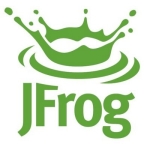We were looking into compliance. I'm a consultant, and we're looking at it from the perspective of using Veracode to ensure that the organization we were consulting for was meeting its compliance expectations.
The solution has helped to improve the time to identify and remediate vulnerabilities that come from software - mostly through the static code analysis tool - as well as the ability to effectively communicate why the vulnerabilities are important.
The feature I've used the most is the static code analysis. It was incredibly easy to start using. As a new user, there wasn't a lot of lead time to understand the software work. It was also very easy to communicate the vulnerabilities that Veracode found to the engineering teams that needed to remediate the issues.
We have used the software bill of materials. This feature is good for helping us manage your supply chain, security, and licensing. That comes into play a lot when we are working with federal contracts where certain materials or processes are not allowed within contracts with the federal government. We would use that to ensure that the software itself is compliant. It is easy to create these reports using this feature.
The product’s policy reporting for ensuring compliance with industry standards and regulations is great. It took its own compliance quite seriously, which is something I always look for when dealing with the vendor. There are certain vendors out there that aren't as serious about their own security. I was comfortable with what the product was doing.
Veracode provides visibility into application status at every phase of development throughout your software development life cycle. It definitely improved the efficiency of it. One of the key things Veracode can do is it can rank the vulnerability defined based on the severity. That allowed us to hone in on what was the highest vulnerability and then work our way down. Therefore, it definitely improves the efficiency of those operations.
Veracode's false positive rate, as far as I remember from my experience, wasn't that bad. Usually, what it will do is it will identify a vulnerability, and then it will explain why the vulnerability is important, and then through those explanations, the engineers and I were able to see if something is an issue or if it is a false positive. When it comes to eliminating false positives, you're never going to have 100%. While it did introduce a little frustration, what did remediate that was the explanations that the software provided.
The false positive rate affected the time we spent on tuning these policies somewhat, however, it wasn't too bad. It wasn't anything to complain about.
For the clients I work with, it has a significant impact on improving the ability to identify and then fix flaws. The tool itself does offer strategies to remediate the efforts if, for whatever reason, the engineering team doesn't understand how best to approach them. Usually, they do, however, it is nice that they offer that service.
Veracode helped our developers save time. From my experience, what would normally take two days we're able to get done in an afternoon. That allows our team to work on more efficient work and more impactful work.
The product has had a positive experience on the overall security posture of our organization. It has definitely improved it. Hands down, it is easy to say that the solution has had a positive impact on the security posture of the organizations I consulted for.
Veracode reduces the cost of dev backups. That said, it's hard to put a number on it. It reduces the dev set time and the work they do can then be allocated effectively to other items.
It would be ideal if it was able to demonstrate higher levels of cybersecurity certifications like becoming FedRAMP compliant or working in those areas. That way we could use it on higher level contracts. That would be a good business opportunity for the solution.
I've used the solution for two years.
I've never run into any stability issues. I haven't heard of anyone else running into any either.
The solution is highly scalable. We did run quite large programs through Veracode, and we also ran quite small programs through it too, and we didn't encounter any issues in either case.
I've never needed to contact technical support.
I cannot recall working with other solutions. I do have experience with a more traditional way of looking at code and identifying errors. That's where this product came in with the ability to just automatically catch those errors.
I was not involved in the deployment of the solution. It doesn't require any more than ordinary maintenance. That's not a big concern.
I have witnessed an ROI while using the solution. It positively impacts our team's ability to get their job done, which reduces strain on employees and therefore reduces employee turnover, which, given the severity of the skill set that we look for, is incredibly impactful for us.
It does pay for itself given the pricing structure. Of course, the pricing structure changes based on the sales deal, et cetera. It definitely had a positive impact on the organizations we used it with. Financially, it does make a solid business case for itself.
I'd rate the solution ten out of ten.
Potential new users should ensure that they take into account the amount of time their teams are spending on dev setups and consider what other work those people could be doing that might be more meaningful - rather than physically looking through code. Veracode has the ability to improve a team's operations as well as an employee's efficiency with doing complex work. Companies definitely need to consider how efficient their team is and consider what this tool could do to improve that.





















